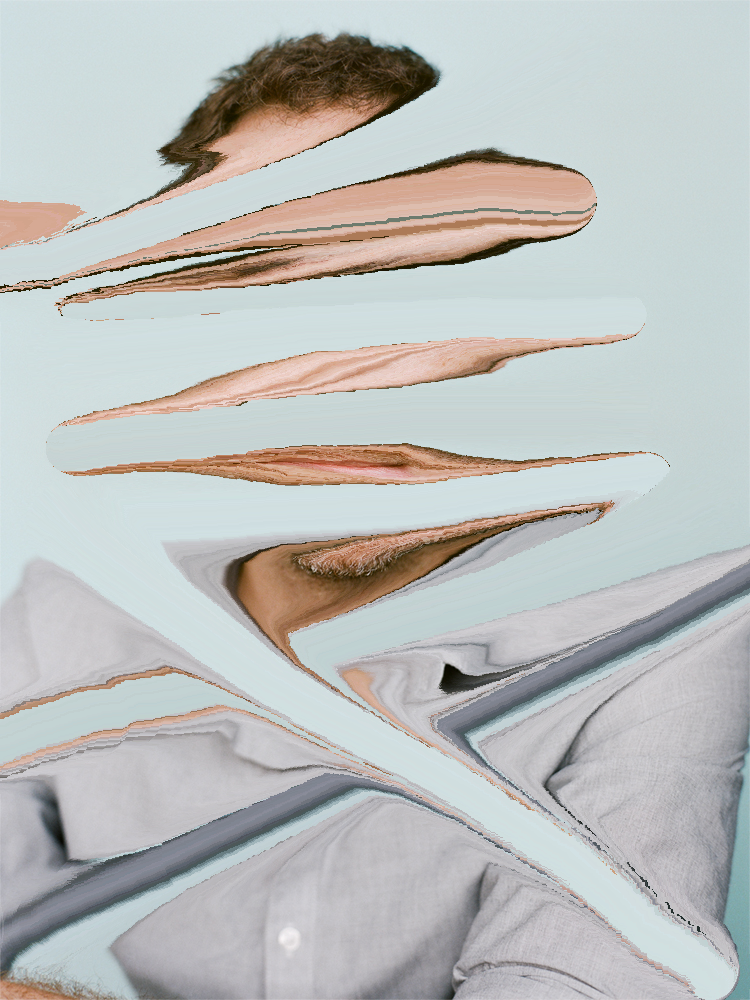T.M.O.O.P. 2019 - 2056
STILL WORKS










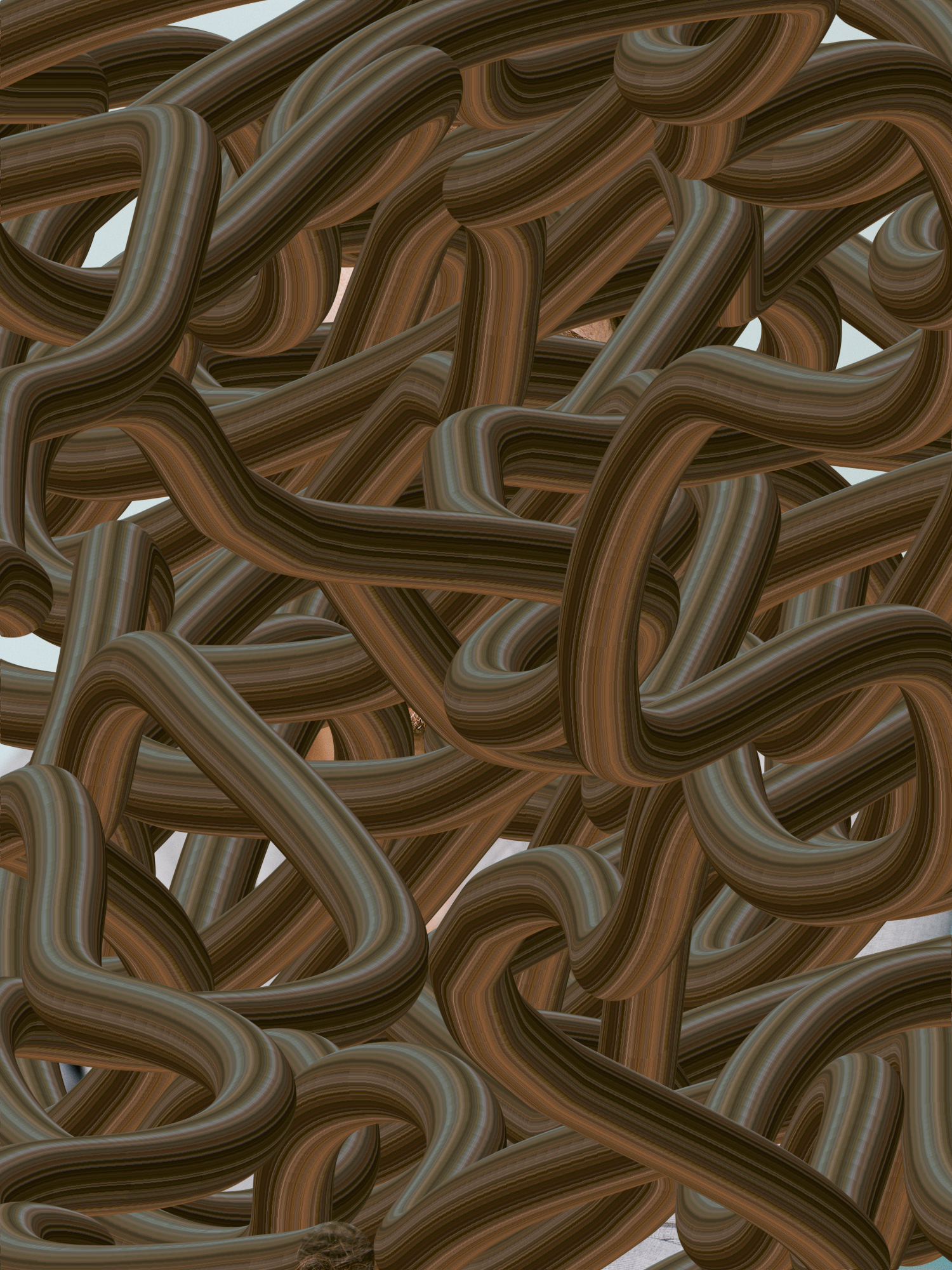

T.M.O.O.P. (Taking Myself Out of the Picture) is a dynamic, ongoing exploration of mortality, self-portraiture, and the digital manipulation of images by the artist Travis LeRoy Southworth. Using a single professional photograph of himself taken in 2019, (the year he turned 40 and faced significant personal and health challenges), Southworth gradually and repetitively removes his own image. Each work, digitally altered using the rudimentary Smudge tool in Adobe Photoshop, becomes a unique abstraction of the artist's visage. Southworth revisits this single portrait multiple times every year to create a body of work that will grow and develop as he ages.
Touch as a mark-making tool is at the forefront of Southworth’s artistic practice, which at once reenacts and investigates the interrelationships between technological and physical artifacts. His use of the Smudge tool is suggestive of a fingers touch to screen, creating an intimate relationship to manipulating a portrait. This erasure of self mirrors both the relentless march of time and the evolution of digital manipulation.
ANIMATED WORKS
This ongoing project is fundamentally tied to the artist's own lifespan. Each year Southworth generates the exact number of images as his current age, making T.M.O.O.P. an unfolding narrative of the artist's life and creative journey. The series is set to culminate when Southworth turns 77 (the average lifespan of an American male in 2019) or upon his prior death. The iterative, degenerative nature of the series could potentially illustrate the artist's own decline in physical abilities over time. Should Southworth reach the age of 77, the series will culminate with a total of 2,222 unique works, closing in the year 2056. Depending on the piece, works can exist as a physical print, jpeg, mp4 or as an interactive webpage through p5.js. Animations are created through screen-recording, javascript or A.I. software.
DYNAMIC CODE BASED WORKS
Select code based works, 2023, dimensions vary. Click on each to load individual dynamic webpage.
In September of 2024, Southworth will celebrate his 45th birthday as T.M.O.O.P. reaches its 5th year. Select works will make their debut as non-fungible tokens (NFTs) on the Ethereum blockchain. Through the incorporation of on-chain dynamic elements, select NFTs are will continue existing post-release. With the integration of blockchain technology, Southworth isn't just exploring the idea of digital immortality, he's embedding it within the fabric of his art. The works, thereby, could gain the capacity to transcend the static nature of traditional mediums and continue to live, change, and interact within the digital space long after the artist's own life concludes.
The project's acronym, T.M.O.O.P., playfully nods to Marcel Duchamp’s 1919 work L.H.O.O.Q., one of the earliest known examples of an artist manipulating a reproduced image. Just as Duchamp's added mustache and text provoke multiple interpretations, so does T.M.O.O.P., which can be read as "trademark oops", evoking a sense of proprietary errors, or even pronounced as "T-Mop," suggesting the artist's act of digitally 'mopping' his face from the canvas. There are many hidden interpretations to the acronym, such as “The Maximum Out of Pocket", which links the project to medical expenses, encapsulating the project's exploration of aging, health, and the cost of life.
Research and further project details:
Below are examples comparing select reproductions and retouched images of L.H.O.O.Q. and the Mona Lisa and Southworth’s self-portrait.

Three different reproductions of L.H.O.O.Q.
Retouched readymade (reproduction of Leonardo da Vinci's Mona Lisa with added moustache and beard). by Marcel Duchamp, 1919.
Retouched readymade (reproduction of Leonardo da Vinci's Mona Lisa with added moustache and beard). by Marcel Duchamp, 1919.

Comparing digitally retouched and original images.
Mona Lisa by Leonardo da Vinci. c. 1503–1516, perhaps continuing until c. 1517. Oil on poplar panel, 77 cm × 53 cm (30 in × 21 in).
Mona Lisa by Leonardo da Vinci. c. 1503–1516, perhaps continuing until c. 1517. Oil on poplar panel, 77 cm × 53 cm (30 in × 21 in).



Comparing all three works.
This particular portrait of Southworth became importrant because it was originally intended to be for a website, a company he freelances for as a Professional Photo Retoucher. Employees were given the option to retouch their own image before uploading them to the web. Southworth found the act of zooming in on one’s own skin and deeming what should be keep as an odd metaphysical experience. A series of events lead this image to become a marker of mortality, middle age and a reflection of what it means to depict oneself in the age of digital manipulation. The photograph taken in 2019 marked the artist turning 40 years of age. It also ended up being the last portrait taken of him before getting skin cancer on his face, requiring surgery. In addition a number of other health and family issues arose right after. Southworth decided to create a body of work based off this single ‘last image’. He has since obtained the copyright from the photographer, wanting to wholey own this portrait.
Much of Southworth’s work deals with the history of portraiture and what it means to depict an individual at a particular place in time and space. He often thought of Marcel Duchamp’s L.H.O.O.Q. which is an appropriated image of Leonardo da Vinci’s Mona Lisa. Duchamp realized that this painting was likely the most recognized portrait in history, and within the smirk of the woman (Lisa del Giocondo) was something hidden and mysterious. He saw a part of himself and hand altered the image to add facial hair. Today the Mona Lisa is the most reproduced, photographed and parodied artwork in the world. Southworth was particularly interested how digital alterations of both these works vary and create a life beyond the original work. He was also taken aback by a few serendipidous similarities between the works.

